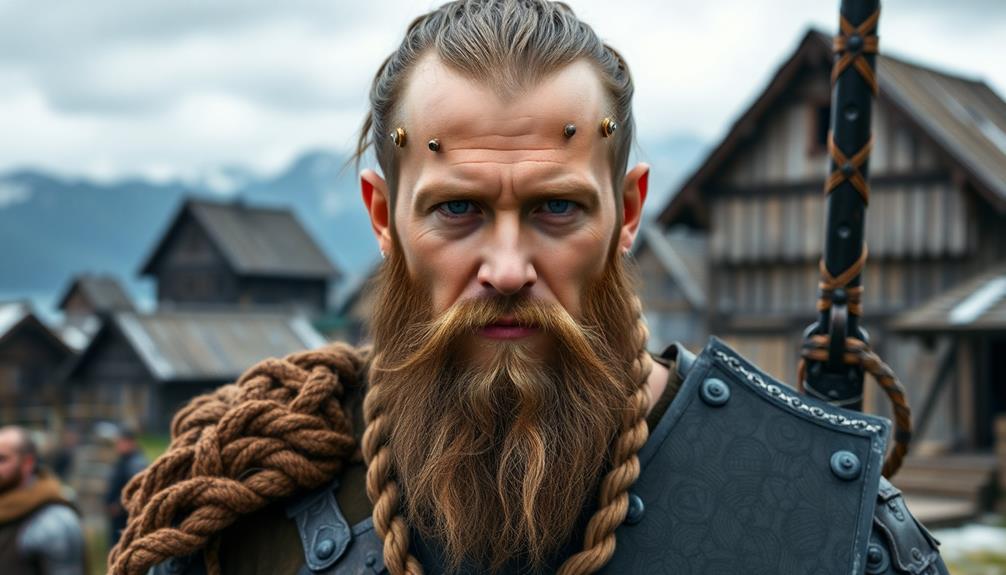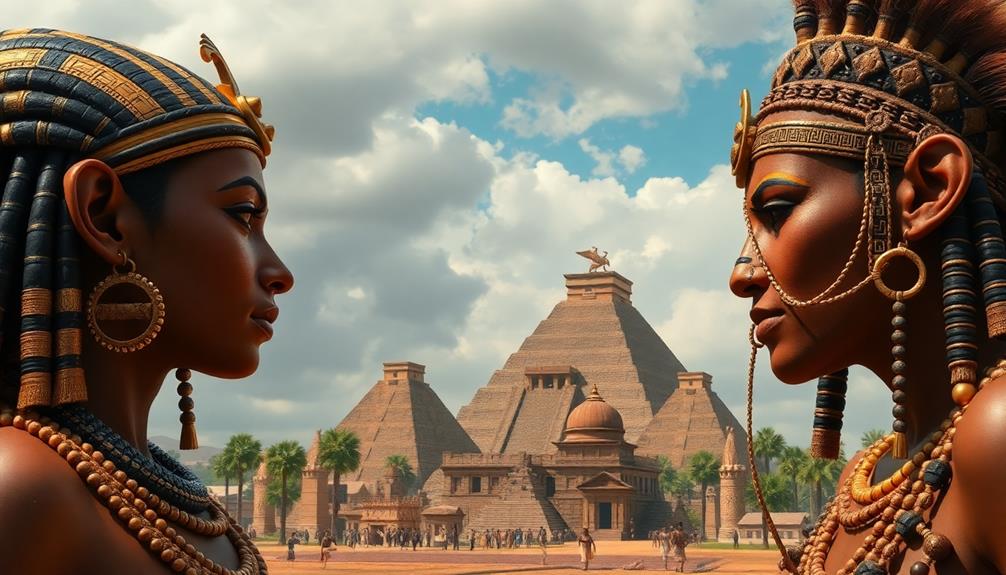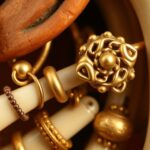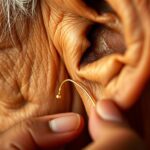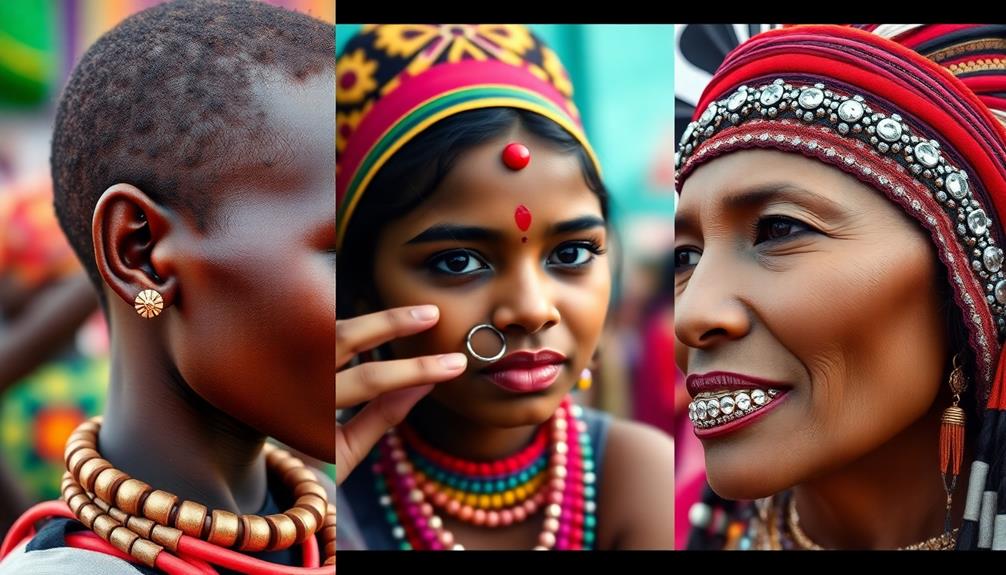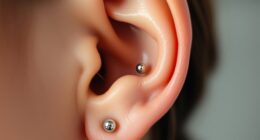In Viking culture, body piercings were significant, even if evidence is limited. You'd commonly find earrings in Viking graves, hinting at their use for social status and personal identity. These adornments likely signified wealth and were influenced by neighboring Slavic cultures. Jewelry wasn't just functional; it reflected individuality and marked important rites of passage. While Viking piercings didn't carry the same religious weight as in some other cultures, they played an essential role in showcasing one's position in society. If you're curious about how these practices evolved and influenced modern interpretations, there's much more to explore.
Key Takeaways
- Viking graves often contain ear jewelry, suggesting the use of earrings as body piercings for adornment and status.
- Evidence for body piercings among Vikings is limited, complicating a full understanding of their everyday use.
- Cultural exchanges with Slavic peoples likely influenced the popularity of earrings in Viking society.
- Body piercings in Viking culture served as status symbols, denoting wealth and personal identity.
- Unlike other ancient cultures, Viking piercings lacked extensive religious significance, focusing more on social identity and aesthetics.
Overview of Viking Body Modifications
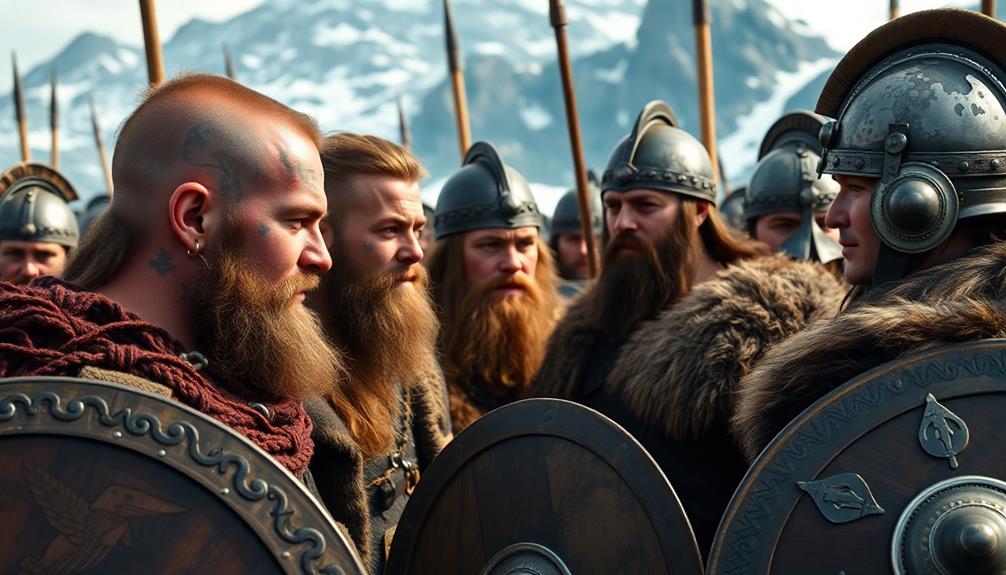
Exploring body modifications in Viking culture reveals a fascinating blend of practices that included tattoos, piercings, and filed teeth. While tattoos are frequently referenced in historical accounts, the evidence for body piercing is limited and largely speculative. You might find it intriguing that Vikings often adorned themselves with earrings and other decorative elements, suggesting an appreciation for body modifications that transcended mere utility.
In Viking culture, these modifications likely carried significant cultural meaning. They could indicate social status, group affiliations, or personal identity. Some tattoos may have been viewed as rites of initiation or expressions of warrior status, reflecting a person's journey into adulthood or their achievements in battle.
Although definitive archaeological evidence of body piercings is scarce, the legacy of these practices continues to shape modern interpretations of Norse culture and body art.
As you explore deeper into Viking history, you'll uncover how these body modifications contributed to the overall identity of individuals within their society. Understanding the cultural significance behind these practices can enhance your appreciation for the complexities of Viking life and the enduring impact they leave on contemporary discussions about body art and modifications.
Evidence of Piercings in Viking Culture
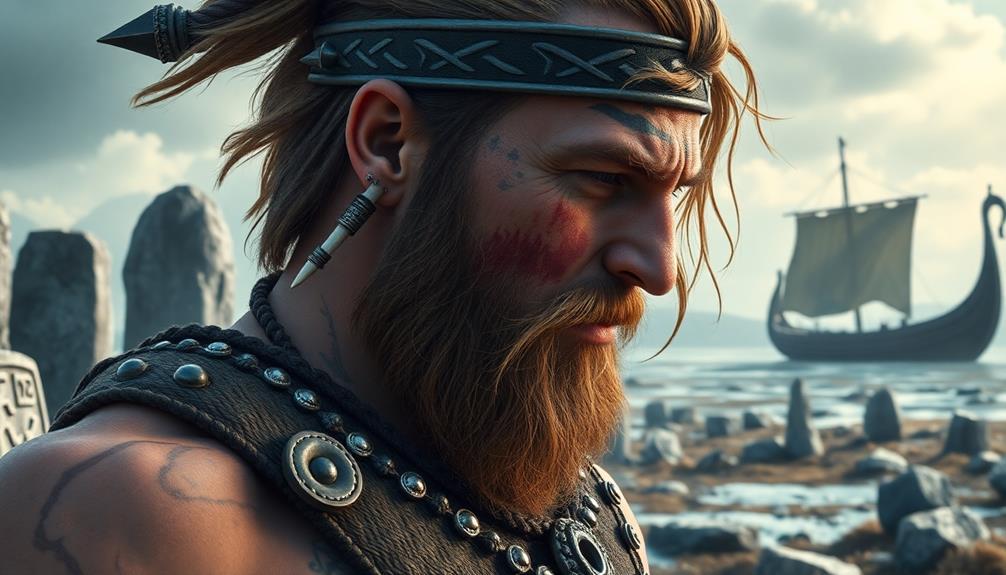
Evidence of body piercings in Viking culture remains elusive, with limited historical documentation complicating our understanding. However, some intriguing hints suggest that body piercings might've played a role in expressing social identity within Viking society.
Here are four key points to reflect on:
- Archaeological Evidence: Viking graves sometimes reveal ear jewelry, indicating the use of earrings and other adornments.
- Status Symbols: These body piercings likely functioned as status symbols, with certain designs denoting wealth and social standing.
- Cultural Exchanges: Interactions with Slavic peoples may have influenced the popularity of earrings among Vikings, suggesting a blend of styles and practices.
- Body Modifications: The presence of jewelry hints that body modifications were significant to Viking identity, although the extent of their everyday use is still unclear.
While the evidence is sparse, it reflects broader trends in historical fashion studies, as researchers explore how Vikings may have used body piercings to convey their social identity.
The combination of jewelry and piercings likely contributed to the rich tapestry of Viking culture, but much of it remains a mystery waiting to be uncovered.
Cultural Significance of Body Adornments
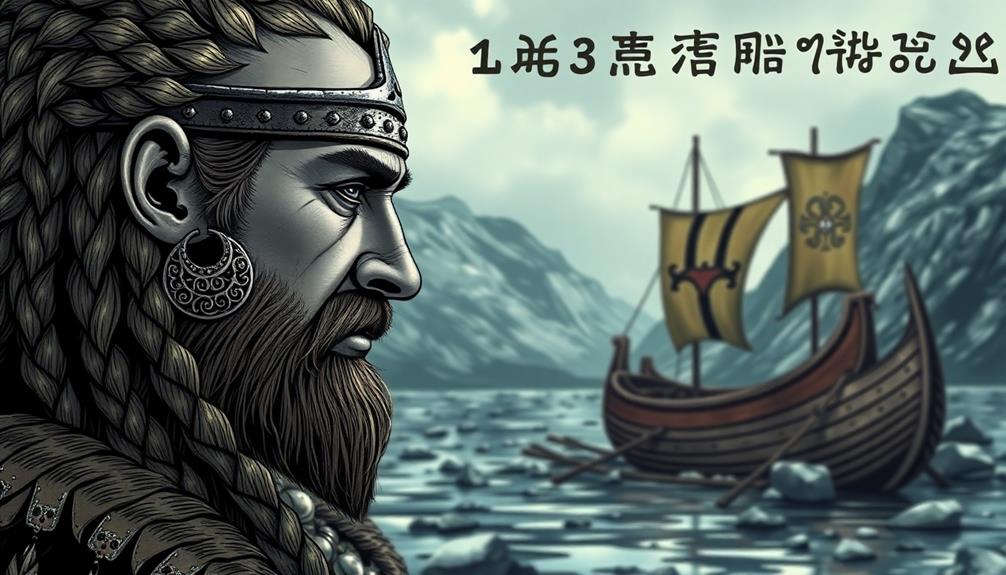
Body adornments in Viking culture were more than mere decoration; they served as fundamental markers of social identity and status. For the Vikings, body adornments like earrings and intricate jewelry were essential in expressing wealth and luxury. These adornments not only showcased individual style but also indicated personal identity and social status within their hierarchical society.
Although historical records on piercing practices are scarce, it's believed that these body modifications were often linked to celebrations or rites of passage, further emphasizing their cultural significance.
Jewelry played a multifaceted role, acting as a functional piece that fastened garments while also serving as a symbol of marital status. The Vikings wore jewelry adorned with symbols such as boar heads and dragons, which conveyed powerful messages about protection, strength, and lineage. This connection between body adornments and ancient practices reveals how deeply ingrained these customs were in Viking life.
Today, interest in Viking jewelry reflects a broader appreciation for historical fashion, reminding us that these ancient practices were vital in shaping identity and social dynamics within their communities. Understanding this significance helps us connect with the past and recognize the enduring power of body adornments.
Comparing Viking and Other Cultures
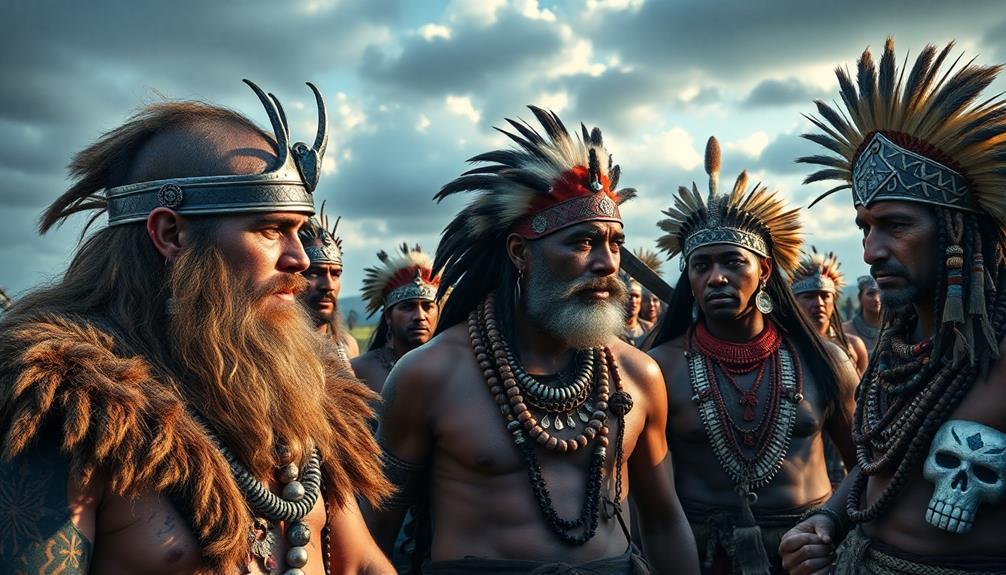
Throughout history, various cultures have approached body modifications like piercings in unique ways, revealing differing values and social structures.
When comparing the Viking era to other societies, you'll notice some striking differences in practices and meanings. Here are four key points:
- Documentation: Limited historical evidence shows Viking piercings weren't as widespread as in ancient African civilizations, where body piercings displayed wealth and status.
- Cultural Influence: Vikings adopted certain body adornments, like earrings worn in precious metals, after cultural exchanges with Slavic peoples, indicating an openness to outside influences.
- Religious Symbolism: In contrast to the elaborate piercings of the Aztecs and Mayans, which served as common symbols of religious significance, Vikings seemed to lack formalized body art customs.
- Tattoo Practices: While tattoos were found extensively in Polynesian societies, evidence of Viking tattoos is scant, with only one historical account suggesting body markings.
Modern Interpretations and Influence
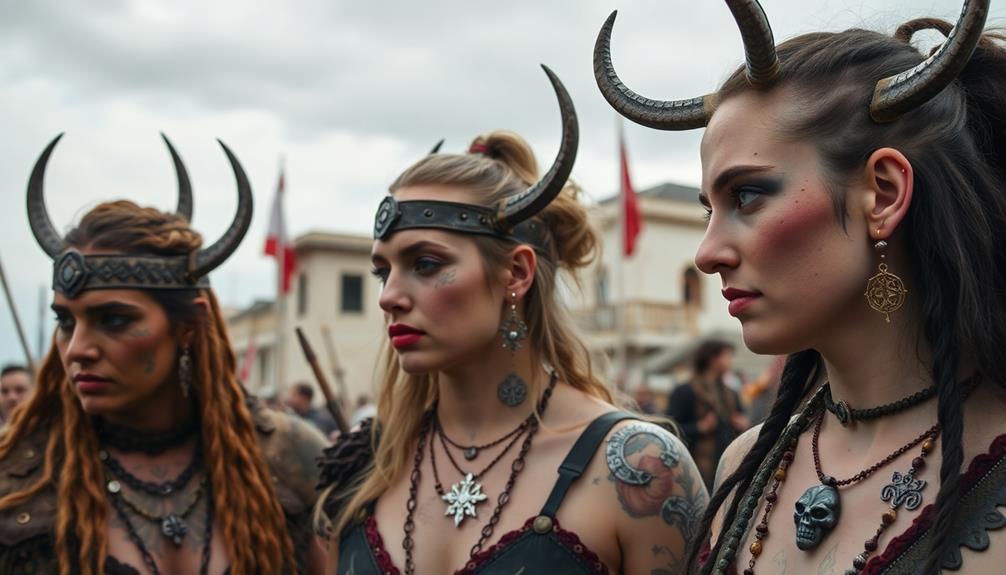
Modern interpretations of Viking body piercings reflect a growing fascination with Norse heritage, blending ancient practices with contemporary trends. Today, many people seek to connect with their Viking roots through body art that incorporates Norse symbols and designs. This resurgence showcases how ancient practices can influence modern fashion trends, with piercings like ear and nose adornments becoming increasingly popular.
As you explore these body piercings, you might notice that they often emulate traditional styles, serving as a way for individuals to commemorate their Viking ancestry. This connection contributes to cultural identity and personal expression, allowing you to wear your heritage proudly.
The influence of Viking culture doesn't stop at piercings; it extends into tattoo art as well. Many designs feature motifs from Norse mythology, further popularizing Viking aesthetics in today's body art scene.
In this way, you can see how modern interpretations of body piercings serve not just as a fashion statement, but as a meaningful tribute to the rich history of Viking culture. Through these practices, you participate in a growing movement that honors ancient traditions while embracing contemporary self-expression.
Frequently Asked Questions
Did Vikings Have Body Piercings?
You might wonder if Vikings had body piercings. While limited evidence exists, some archaeological finds suggest they adorned themselves with earrings. However, the overall prevalence and cultural significance remain unclear due to scarce documentation.
What Culture First Had Piercings?
You'd find evidence of body piercings in ancient civilizations, with the earliest practices noted in cultures like the Egyptians and Minoans around 2500 BCE. They used piercings for aesthetic and cultural significance, shaping future trends.
Why Didn't Vikings Wear Earrings?
You might think Vikings avoided earrings entirely, but they simply prioritized other forms of adornment. Their focus on status and utility overshadowed earrings, reflecting a culture that valued different expressions of identity and wealth over mere decoration.
Did Vikings Do Body Modification?
You might find that Vikings engaged in some body modifications, though evidence is scarce. They likely used adornments for social status or identity, but the specifics of these practices remain largely speculative and uncertain.
Conclusion
In the grand tapestry of Viking culture, body piercings weren't just decorations; they were whispers of identity and symbols of strength. As you explore their world, you see how these adornments danced through time, influencing modern expressions of self. While the past may seem distant, the echoes of those ancient practices still resonate today, inviting you to embrace your own journey of adornment. So, as you pierce through history, let the Vikings inspire your unique narrative.
Hi, my name is Danielle, and I’m an author for piercings-body.com. I have a passion for writing and love to share my knowledge on all things body piercing-related. I’m also a huge advocate for safe body modification practices and believe everyone should be able to make informed decisions about their bodies. When I’m not writing or blogging, I enjoy spending time with my family and friends, practicing yoga, and exploring new places.

